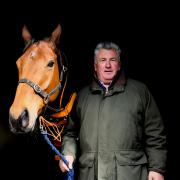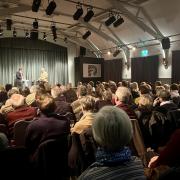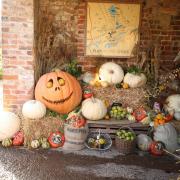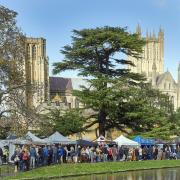Dan Pearson’s horticulture career has seen him tend to green spaces around the globe, but closer to home the esteemed landscape designer has swapped the cramped conditions of the capital for his biggest project to date, discovers Jake Taylor

Dan Pearson’s new garden is a bit of a spectacle. Having started off in the capital, where he tended a tiny roof garden and a small oasis in the midst of the London metropolis, the TV gardener, landscape designer and horticulture journalist set his sights on a new challenge in the heart of the British countryside. What he ended up with was a 20-acre plot nestled in the Somerset hills just north of Bath.
“When I first visited the plot, I had no intention of moving to Somerset, or that part of the county anyway,” the 52-year-old reveals. “We had some friends living nearby who knew we were looking to move out of London and they persuaded me to visit.
“The area offered so much potential because it had previously been market gardens for Bath, so the ground was very good. It had south-facing slopes and a modest-sized building – I didn’t want a big house; I wanted a small house and a big piece of land. It just ticked the boxes for what we wanted. “We are basically living outside constantly now and the house is just a shelter from the elements. It was a surprise, but it enables me to maintain a foothold in London with the studio and yet feel like I’m living properly in a rural setting where I can enjoy the long view and the things that inspire me.”
His previous work at flower shows, or for clients as part of his landscape design company, has been focused mainly on creating small bursts of high-end horticulture. But the Somerset project necessitated a much wider understanding of the space available and all the multitude of ways that he could keep the property true to its surrounding wilderness and open to its local residents.
“One of the first things I had to get to grips with was the difference between gardening and farming,” he explains. “We need to work with our local farmers. We don’t have our own livestock, but we wanted to have livestock on the greater majority of the land to maintain it without the gardens being under a strict grazing regime.
“What we want to do is redevelop the meadows and soften all the edges, and that tends not to be the farming way. So we’re trying to strike this balance between a space that is managed quite lightly and carefully, but can also be done with the farmers’ help.
“So the meadows we have over-sown with wild flowers, for instance, are grown long from the middle of March to the middle of July to promote the biodiversity that comes with that. And then the farmer takes the hay crop and grazes the land again until the beginning of March. We’re learning constantly – things like cutting the hedges year on and year off – just trying to instil a softer way of maintaining the landscape.”
In spite of the scope and scale of the lands Dan has acquired, he has still made sure to carve out a few separate areas in which to indulge in the more traditional aspects of his profession.
“The actual area I am gardening myself is very tight and closer to the buildings,” he says. “I am in the process of developing a series of gardens around the buildings and the barns. There’s one vegetable and fruit garden so we can be self-sufficient. I’ve planted an orchard and a nuttery and I’m getting ready to plant a relatively decent-sized ornamental garden, but it’s not so big that I can’t look after it myself with maybe a little bit of help.
“It’s all about striking that balance between what you can look after without it starting to overwhelm you on the energy resources you’ve got and creating that relationship with the local farmers so they can help you maintain your land as you wish it to be maintained.”
As Dan settles fully into his rural home, he’ll also be bearing in mind the experiences that led him to his most recent writing project: Natural Selection. Made up of various passages from his decade-long career with The Guardian and beyond, the book documents the rhythms of the Great British garden as the year goes on and how to properly ‘invite’ the seasons into your green space.
“It’s made up of passages on spring, summer, autumn and winter,” he says. “But as we compiled the book we realised it has this unique flow to it that may have gone unnoticed when the various parts were first published.
“Whereas each week something was read in isolation in the paper, together you have something that has a different rhythm to it.
“It’s a series of nice, bite-sized chapters that you can read two or three at a time, or just one, but you still feel like you’re moving through the course of the year. I think it’s got a different kind of rhythm to the articles that appeared in the paper, and the pieces have a different importance because of that.”
Natural Selection: A Year in the Garden by Dan Pearson is published by Faber & Faber. RRP £20.



























